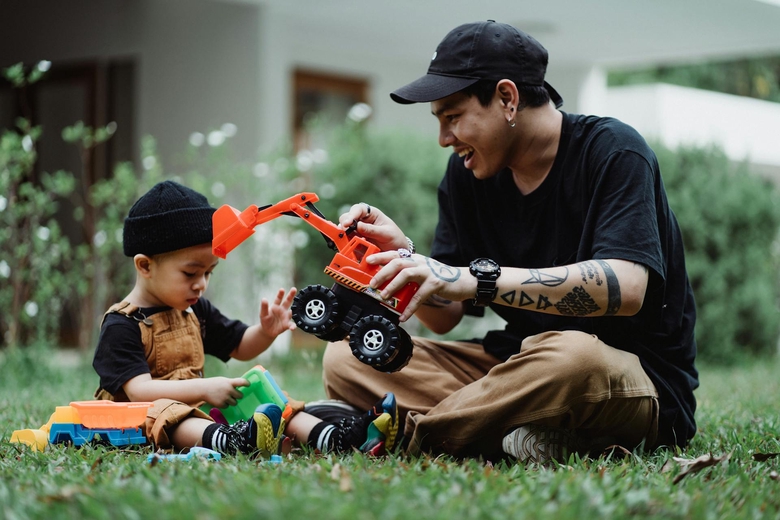In the ever-evolving landscape of education, one thing remains constant: the critical role of STEM (Science, Technology, Engineering, and Mathematics) in shaping the future. As parents and educators strive to prepare the next generation for the challenges of tomorrow, innovative tools and methods are sought to enhance learning. Among these, construction toys stand out as powerful instruments that can significantly boost STEM achievement in children and teens.

The Link Between Construction Toys and STEM Learning
Construction toys like LEGO, K'NEX, and Magna-Tiles are more than just sources of entertainment; they are dynamic educational tools. These toys encourage children to design, build, and experiment, laying a foundation for critical STEM skills. Here's how construction toys contribute to each area of STEM education:
1. Science
Exploring scientific principles through construction toys can be both engaging and educational. For instance, children learn about gravity, balance, and stability as they build structures. They can experiment with different materials and designs, observing how changes affect the outcome. This hands-on exploration fosters a deeper understanding of scientific concepts and encourages curiosity and experimentation.
2. Technology
Technological skills are nurtured as children engage with construction toys, particularly those that incorporate programmable elements, like LEGO Mindstorms or VEX Robotics kits. These toys introduce basic programming and robotics, allowing children to create and control their own machines. Through trial and error, they learn problem-solving and computational thinking, essential components of technology education.
3. Engineering
Engineering concepts are at the heart of construction toys. Building structures, vehicles, or machines requires an understanding of engineering principles such as design, mechanics, and structural integrity. Children learn to plan, design, test, and improve their creations, mirroring the engineering design process. This hands-on practice develops their ability to think like engineers, preparing them for more advanced engineering studies.
4. Mathematics
Mathematical skills are inherently developed as children play with construction toys. They use measurements, geometry, and spatial reasoning to create their designs. Counting pieces, recognizing patterns, and understanding symmetry are just a few ways these toys incorporate math. These activities make abstract mathematical concepts concrete and understandable, enhancing children's numerical skills and confidence in math.
The Benefits of Construction Toys in STEM Education
1. Enhancing Creativity and Innovation
Creativity and innovation are fostered through open-ended play with construction toys. Children are free to experiment with different designs and solutions, encouraging out-of-the-box thinking. This creative process is crucial for innovation in STEM fields, where new ideas and approaches drive progress.
2. Developing Problem-Solving Skills
Problem-solving skills are honed as children encounter and overcome challenges while building. Whether it's figuring out how to make a structure more stable or how to program a robot to perform a specific task, these activities require critical thinking and perseverance. Developing these skills early on prepares children for complex problem-solving in higher education and their future careers.
3. Encouraging Collaboration and Communication
Collaboration and communication are essential skills in STEM fields. Construction toys often encourage group play, where children work together to build projects. This collaborative environment helps them learn to communicate ideas, share responsibilities, and work as a team. These social skills are vital for success in any STEM career.
4. Building Confidence and Resilience
Confidence and resilience are built through the iterative process of design, testing, and improvement. Children learn that failure is a part of learning and that persistence leads to success. This growth mindset is crucial for tackling the challenges they will face in STEM education and careers.
Practical Tips for Parents and Educators
1. Provide a Variety of Construction Toys
Offering a range of construction toys can cater to different interests and developmental stages. From basic blocks for toddlers to advanced robotics kits for teens, having a variety of options ensures that children remain engaged and challenged.
2. Integrate STEM Concepts in Play
Integrating STEM concepts into playtime can enhance the educational value of construction toys. For example, discuss engineering principles when building a bridge or explore coding fundamentals when programming a robot. This contextual learning helps children make connections between play and academic subjects.
3. Encourage Open-Ended Play
Encouraging open-ended play allows children to explore their creativity and develop their problem-solving skills without constraints. Avoid providing step-by-step instructions all the time; instead, let them experiment and find their own solutions.
4. Create a Supportive Environment
Creating a supportive environment where children feel safe to experiment, fail, and try again is crucial. Celebrate their successes and provide encouragement during challenges. This positive reinforcement builds their confidence and fosters a love for learning.
Construction toys are powerful tools that can significantly enhance STEM achievement in children and teens. By promoting creativity, problem-solving, collaboration, and resilience, these toys lay a strong foundation for future success in STEM fields. As parents and educators, providing opportunities for engaging, hands-on learning through construction toys can help cultivate the next generation of scientists, technologists, engineers, and mathematicians.